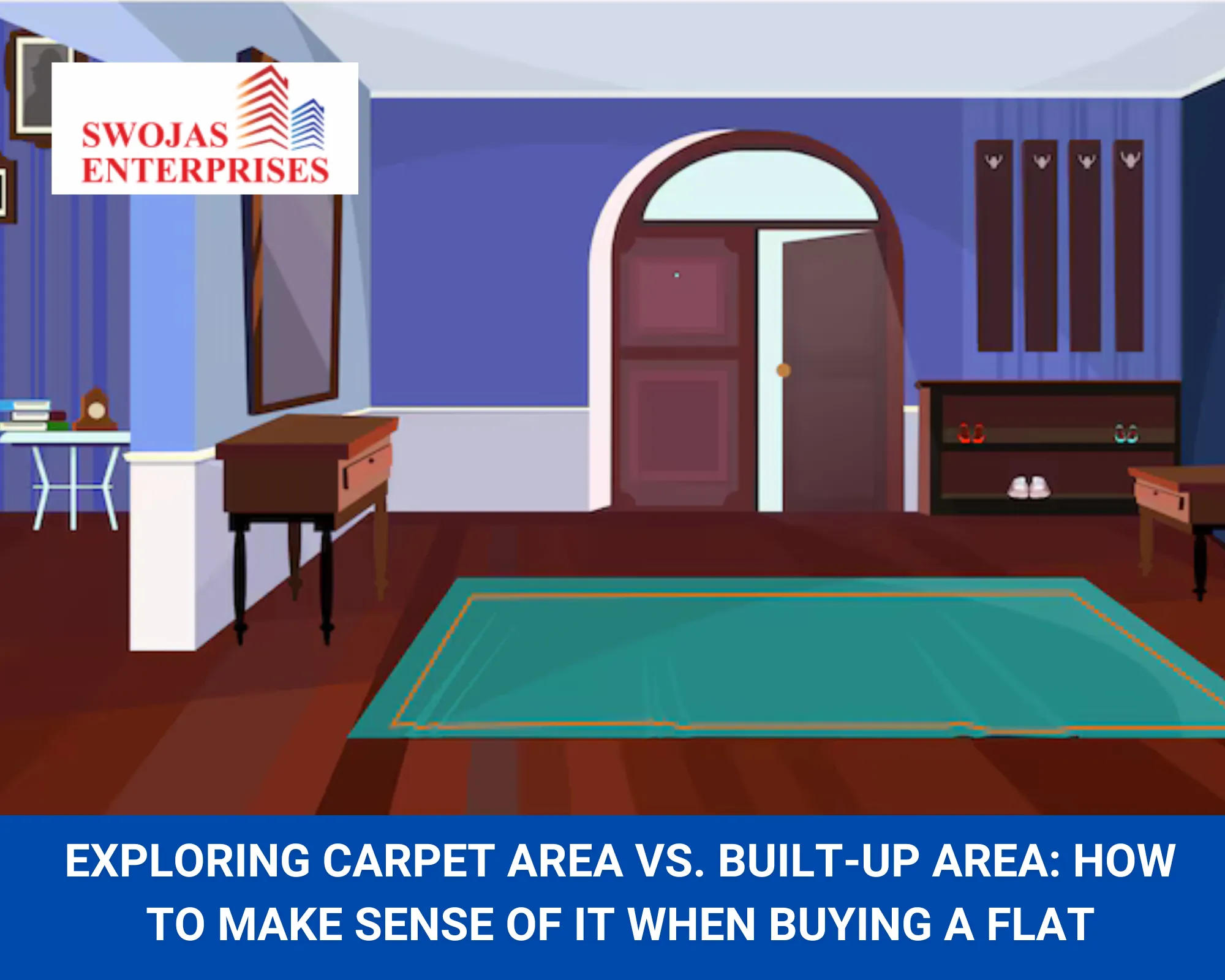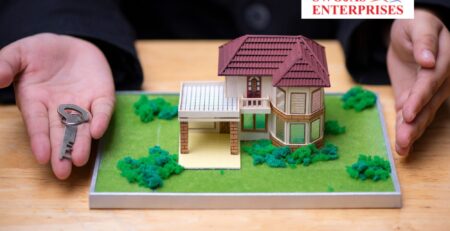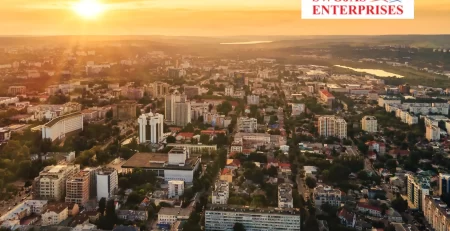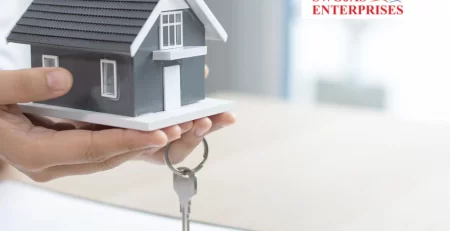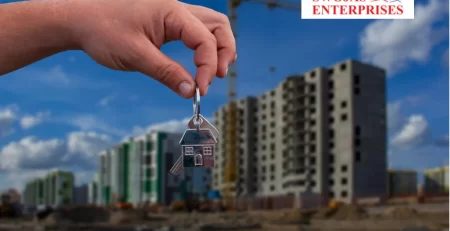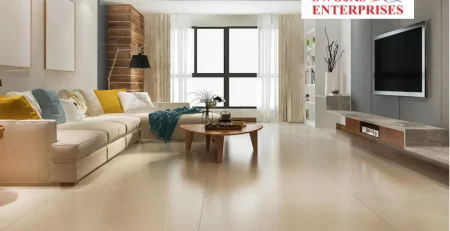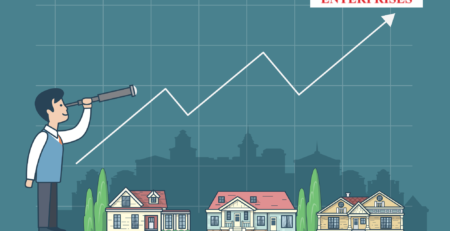Exploring Carpet Area vs. Built-Up Area: How to Make Sense of It When Buying a Flat
Swojas Enterprises2025-05-26T10:42:55+00:00When it comes to buying a flat, the most confusing yet critical aspect often lies in understanding carpet area, built-up area, and super built-up area. These terms are so often thrown at the buyer, that they end up acting like they know it all. But in reality, there is always confusion. Many buyers are surprised to find that the “1,200 sq ft” home they just booked feels smaller than expected. Why? Because not all square footage is created equal.
Let’s break down these real estate terms with practical examples, and explain how they influence your home’s price, layout, and usability—especially in Pune’s competitive property market so that your house-buying journey is easier.
Why This Distinction Matters
When you buy a property, you’re essentially paying per square foot. But which square feet exactly? Is it the space you will actually walk on, or does it include walls, balconies, or even the lift lobby outside your home?
Understanding these terms is not just about clarity—it is about value for money. A lack of awareness can lead to overpaying or choosing a flat that does not suit your lifestyle. In a city like Pune, where space comes at a premium and builders use varying standards, this knowledge can be your biggest tool for negotiation that will shift you from being just a buyer to an empowered buyer.
What is a Carpet Area?
Let us start with the most important term for any buyer: carpet area.
As per RERA (Real Estate Regulatory Authority), carpet area is defined as the net usable floor area of an apartment. This means the area within the walls—excluding balconies, the thickness of inner/external walls, and common areas.
Think of it this way: if you were to roll out a carpet wall-to-wall inside your home, that is your RERA carpet area.
This is the space you live in, use daily, and furnish. In most flats, the carpet area is around 65–70% of the super built-up area, depending on the layout and builder practices.
Carpet Area vs Usable Area: A Quick Example
Say a 2BHK flat is marketed as 1,000 sq ft of super built-up area. Its carpet area might be just 650 sq ft. That’s the space where your furniture goes, where your kids play, and where real life happens.
This difference is why carpet area calculation should be your first checkpoint—not the attractive headline numbers in the brochure.
What is Built-Up Area?
Built-up area includes the carpet area plus the area covered by internal and external walls, and sometimes the balcony or utility space.
For example, if the carpet area is 650 sq ft, and the internal/external walls and balconies take up another 150 sq ft, the built-up area becomes 800 sq ft.
While more honest than the super built-up figure, it still doesn’t tell you the whole story about usable space.
Enter Super Built-Up Area (or Saleable Area)
Here’s where the confusion deepens. Super built-up area includes:
- Carpet area
- Internal walls
- External walls
- AND a proportionate share of common areas (lobby, staircase, clubhouse, gym, etc.)
This number is also called the saleable area—because this is what you are billed for.
The problem? Builders often inflate this number to show a lower per sq ft rate, making the project appear more affordable. But in truth, you could be paying a premium for space you never enter.
How These Areas Affect Pricing
Let us say two builders are selling similar flats in the same locality. One markets a 1,000 sq ft flat at ₹8,000/sq ft (super built-up), while another offers a 700 sq ft carpet area flat at ₹11,000/sq ft.
At first glance, the second one looks costlier. But when you do the math:
- Builder A: 1,000 x ₹8,000 = ₹80,00,000
- Builder B: 700 x ₹11,000 = ₹77,00,000
And in the second case, you are getting more usable space. This is where buyers must see through the marketing tricks and ask the right questions.
How to Verify Area Claims as a Buyer: The important questions to ask!
- Ask for the carpet area as per RERA.
- Demand the floor plan with area statements.
- Ensure the sale agreement mentions carpet area.
- Insist on RERA registration—this ensures transparency.
What’s the Trend in Pune?
In cities like Pune, especially in central areas like Kothrud, Erandwane, and Deccan, buyers are becoming more aware of carpet area-based pricing. Projects that are transparent about usable space and RERA norms tend to sell faster.
For instance, flats with 100% Vastu-compliant layouts and high carpet-to-saleable ratios were booked early in the launch phase. These smart buyers knew how to read the floor plan—and it paid off.
Conclusion: Be a Smarter Buyer
When you’re house hunting in Pune—or anywhere—the magic is in the carpet area. That’s your real home, and that’s what you should compare.
Don’t be swayed by inflated super built-up area promises. Always read the fine print, ask the right questions, and calculate carpet area when evaluating options. This simple habit can save you lakhs and ensure you get a home that truly meets your expectations.
Frequently Asked Questions (FAQs)
Q1: How is the carpet area different from the built-up area?Carpet area is the actual usable space inside your flat. Built-up area adds walls and balconies to that.
Q2: Why do builders promote super built-up area?
Because it allows them to advertise a lower per sq ft rate, even if you get less usable space.
Q3: Can carpet area be found in the sale deed?
Yes, especially in RERA-compliant agreements. Always insist on it.
Q4: Is carpet area the same in all states under RERA?
Yes, RERA has standardized the definition across India.
Q5: How do I calculate the carpet area from a floor plan?
Use the layout to measure internal room dimensions and exclude wall thicknesses and balconies.

